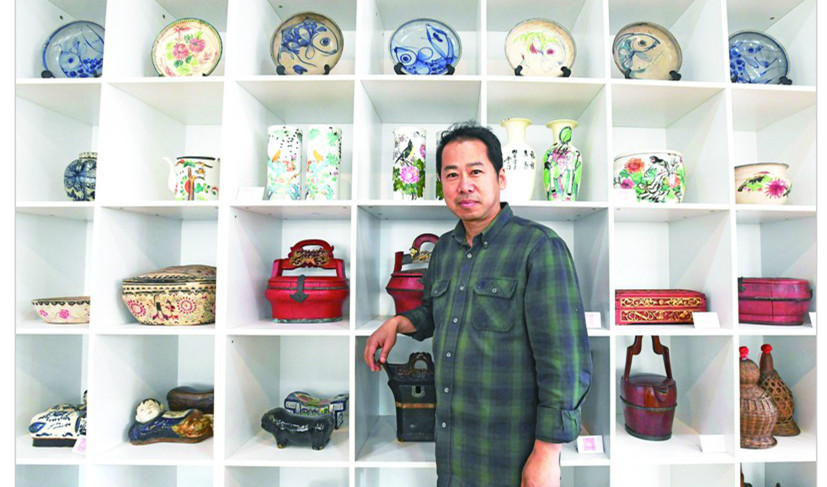Art professor collects folk art for study and education
- By Liu Sitong
 0 Comment(s)
0 Comment(s) Print
Print E-mail China.org.cn, January 8, 2018
E-mail China.org.cn, January 8, 2018
Fish dishes from Shandong province, clay figurines from Fengxiang, Shaanxi, embroidery of Miao ethnic group, patterned cloth from Hunan province, decorated sedan chair from Ningbo, Zhejiang are among the dazzling array of exhibits at the folk art museum established by Shi Jin, an art professor at the Fine Art College, Qingdao University.

Over the years Shi Jin has collected more than 10,000 items of folk art, covering various aspects of daily life. These artifacts have been made the most of in his folk art study and teaching.
He spent three to four months each year exploring traditional cultures at small towns and remote countryside, including primitive weaving technology and exquisite murals on old wooden walls.
His collections can be divided into several different series, ranging from ceramic fish-featured dishes, food containers, and textile and Shandong embroidery, to dough figurines molds from Jiaodong region and farming tools.
He began collecting folk art works in 1980s with a Boshan kiln produced fish-themed ceramic dish, now his fish dish collection contains 1,000 artifacts in 300 varieties. Delicate works of art such as antique trousseau, carefully decorated carpenter’s ink marker, and old textile machine verging extinction are also part of his collections.
Shi Jin said that his collections show a panoramic scene of traditional farming culture. The utensils have been given auspicious meanings, reflecting ordinary people's pursuit of happiness in life. And these artifacts are not easy to be passed over generations since they are consumable supplies.
The first class he provides for his post-graduate students constitutes a tour to the museum of his, through which the students may gain an intuitive sense of folk art. Through such experiences, students will be inspired to think of practicality issues when create art works.
All these old crafts are master pieces in the eyes of Shi Jin, reflecting the aesthetics of the mass public. He also believes that the essence of designs is to better serve the society.




